This tribe is part of the four Nguni (nations) tribes in South Africa.
It also touches on aspects about their homesteads, food, folklore, songs, and art.
The Xhosa are a Bantu-speaking tribe and the second-largest tribe in South Africa.

Boys from the Xhosa tribe who have undergone a circumcision ceremony walk near Qunu on June 30, 2013. Photo: Carl DE SOUZA (modified by author)Source: Getty Images
These people are predominantly found in the Eastern and Western Cape provinces.
The Xhosas call their language isiXhosa, but the world calls it Xhosa in English.
Discover the most interesting facts about the Xhosa culture below.
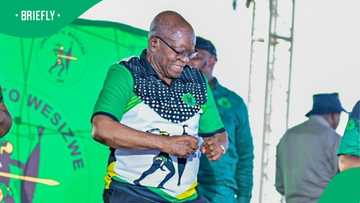
Read also
They also have smaller subtribes like the Bhaca, Bomvana, Fingo, Nhlangwini, and Xesibe.
On top of this, their food is sumptuous and highly nutritious.
Modern Xhosa people wear classic pieces and prepare native meals during special cultural and religious events.
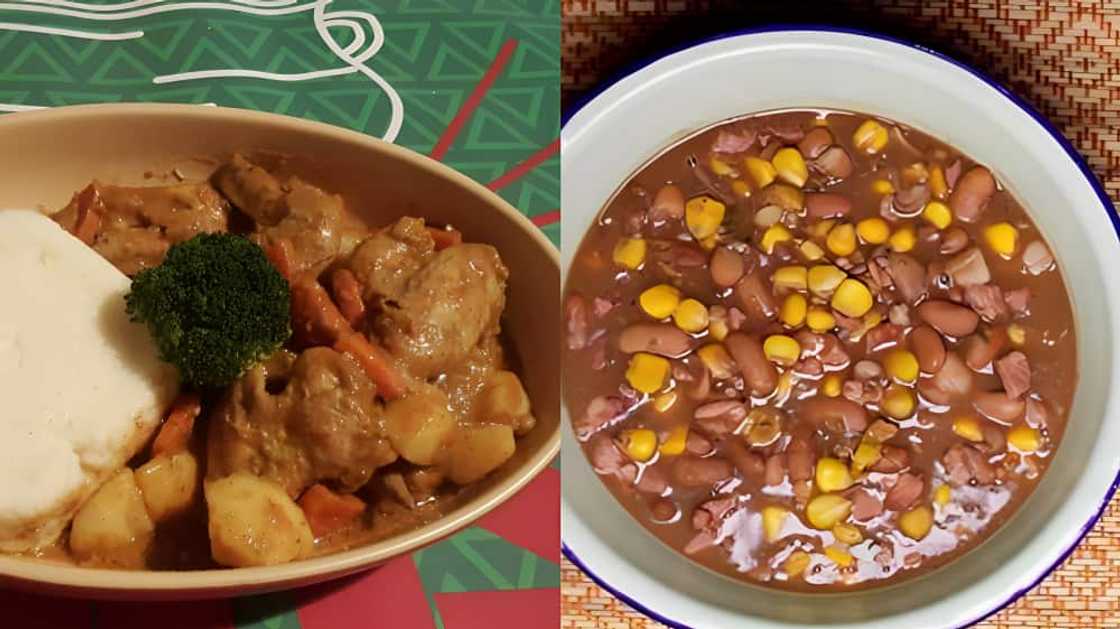
Xhosa traditional umleqwa (chicken stew) and umngqusho (corn and beans). Photo: @XhosaLanguageSchool, @XhosaXulture (modified by author)Source: UGC
The mainXhosa cuisineare corn-based meals, different types of meat, and milk (often fermented).
They usually have meat during traditional celebrations, rituals, and rites.
Some popular Xhosa meat-based dishes areinyama yebhokwe,umleqwa,inyama yegusha, andinyama yenkomo.
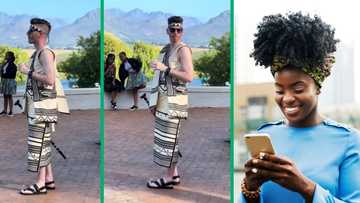
Read also
Xhosa has numerous rules aboutfood.
Married women wear long aprons over their dresses.
Theisikhakha(dress) is decorated with black bias binding at the hem and neck.
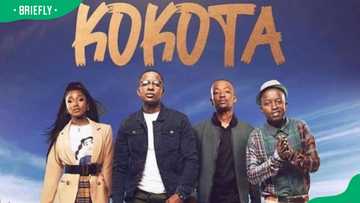
Read also
Meanwhile, their beaded jewelry are primarily red, blue, dark blue, white, and yellow.
Most Xhosatraditional attireare cotton-woven and come in numerous unique styles and patterns.
The men wear wrap-around skirts running from the waist to the feet.
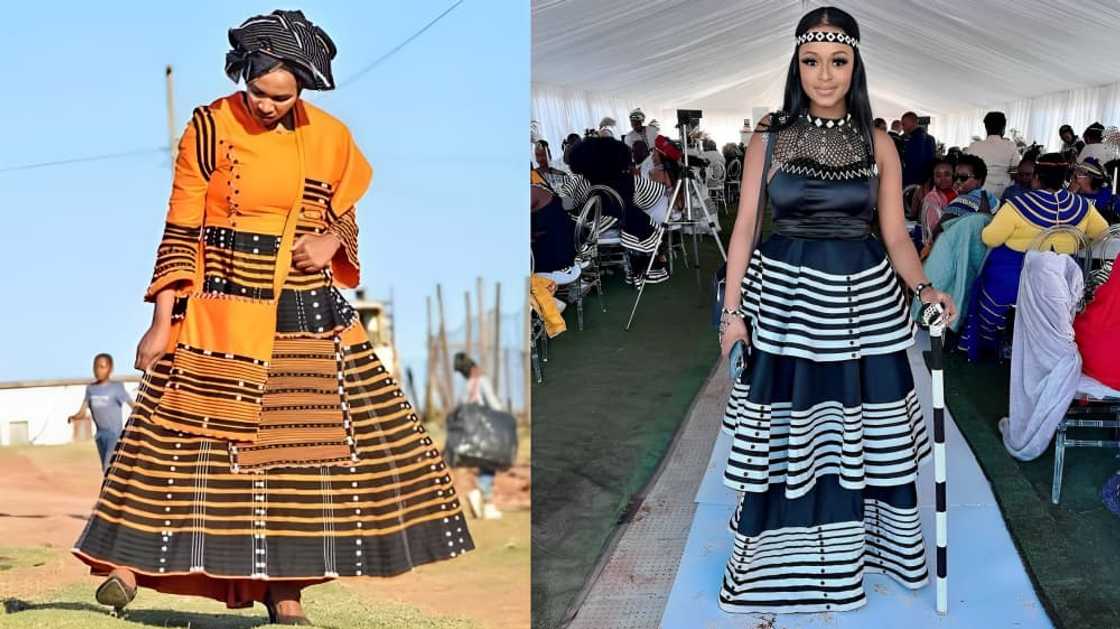
Women wearing traditional Xhosa wedding dresses. Photo: @Xhosa traditional attire - umbhaco, @mikolo.co.ug (modified by author)Source: UGC
They can use these sticks to defend themselves and their families.
Xhosa men learn how to fight with sticks growing up.
Boys practice this fight while herding cattle in theveld(pastures).
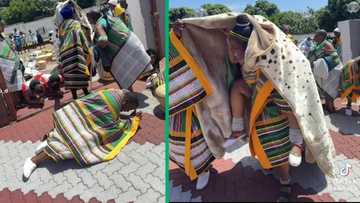
Read also
As a result, their religion has become a unique blend of traditional Xhosa beliefs and Christianity.
Thesupreme being in Xhosais calledMdali,Thixo, orQamata, and they communicate with him through ancestral intermediaries.
The ancestral spirits, in turn, act as mediators between the people and the deity.
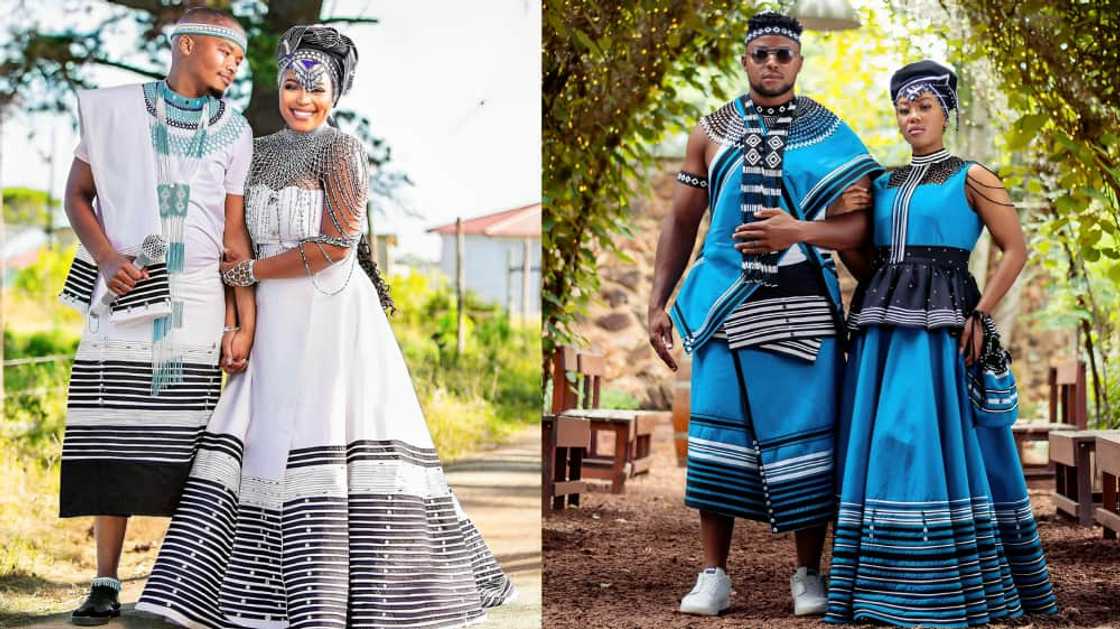
Couples wearing white and blue Xhosa wedding attire. Photo: @sivemabuya, @royalcouturesa (modified by author)Source: UGC
The ceremony begins with theukuzenaprocess, which can be done in three ways.
If they reject the proposal, they will keep the spear.
This usually happens when they fear opposition from the lady’s family.

Read also
After a secret courtship, they agree on the day and time of eloping.
The fourth option is theukufilisha, whereby the man speaks to the girl’s parents.
The latter also responds with a letter.
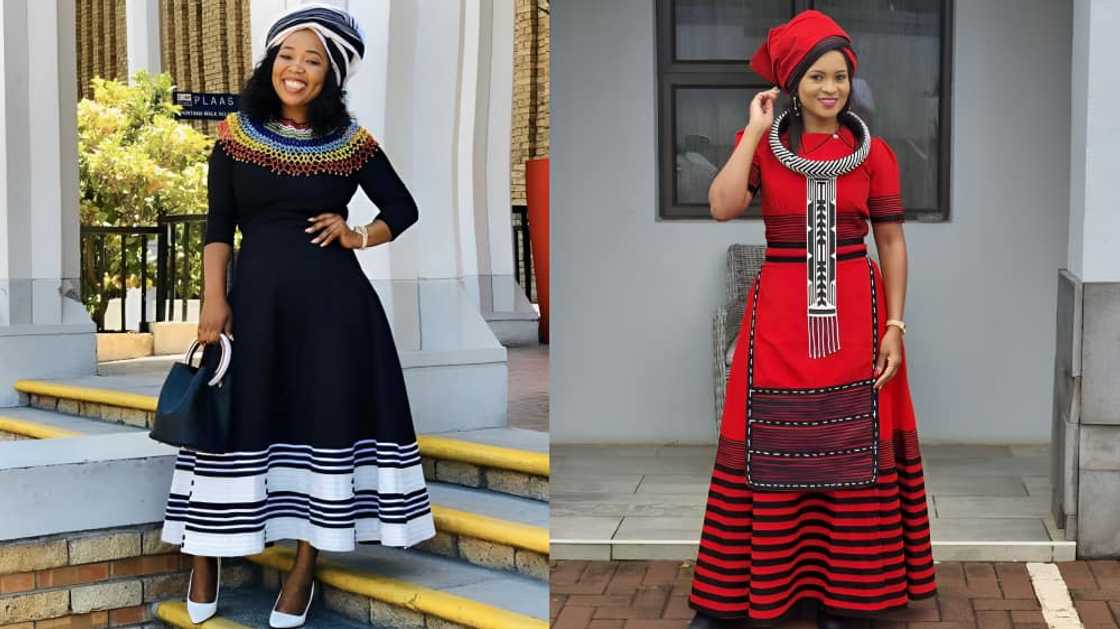
Women wearing black and red Xhosa wedding attire. Photo: @xhosabrides1 (modified by author)Source: UGC
Two men from the woman’s home deliver it to the man’s parents.
This traditional letter acceptance process is calledukuvuma.
SABC2’s Married Our Way wedding show: What can you expect?

Read also
The woman’s family informs the man’s family of the date for thelobolaceremony through the acceptance letter.
Thelobolaceremony has several stages.
What happened to Big Nuz members?

Women wearing black and white Xhosa wedding attire. Photo: @thabsie_sa, @xhosabrides1 (modified by author)Source: UGC
Here is everything we know
The second token,isazimzi,demonstrates the seriousness of the groom’s family.
After the negotiations and agreeing on the dowry size, the bride’s family performsisivumo.
They slaughter a cow to feed the groom’s family.
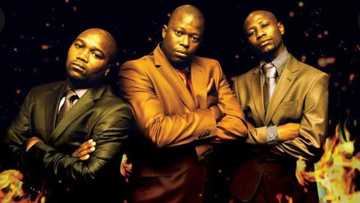
Read also
It signifies the two families accept to have a relationship through their children’s marriage.
This cow is a fine the bride’s family imposes on the man.
After thelobolaceremony, people escort the bride to the groom’s home foruduli(bridal party).

Read also
The party happens on the eve of the wedding day.
The man’s family gives the bride and her guests a special hut and gifts them a goat calledumathulanthabeni.
The following day will be forumdundoorumtshatso(the actual wedding).

Couples wearing Xhosa wedding attire. Photo: @xhosabrides1 (modified by author)Source: UGC
Usually, the men are the lead singers, while the women respond to the songs.
After that, female elders are given the chance to offer her more marital advice.
This guiding and counseling process is calledukuyala.

Read also
The morning after theumdundo, the groom’s family gives the bride’s family blankets and other gifts.
She will sit on a grass-woven mat and eat goat meat and sour milk.
The woman will use the mat wherever she goes instead of sitting in a chair.

Read also
Xhosa birth rituals
Xhosa people do not pickchildren’s namesbefore birth.
The mixture aids the drying process, which, in turn, makes the placenta fall off faster.
They burn aromatic leaves from thesifudutree and float the baby (upside-down) over its pungent smoke three times.

Women wearing Xhosa wedding attire. Photo: @xhosabrides1 (modified by author)Source: UGC
The smoke makes the baby cough, and sometimes, scream severely.
The women return the baby to the mother, who then passes it under her left and right knees.
The Xhosa people believe thesifuduceremony strengthens the baby’s spirit and protects it from future evil.

Read also
Afterward, they women will wash and smear the baby withingceke, a white chalk made of groundedmtombotiwood.
Its sweet smell stays on the baby for weeks.
The family sacrifices a goat and invites friends and relatives to theimbelekofeast.
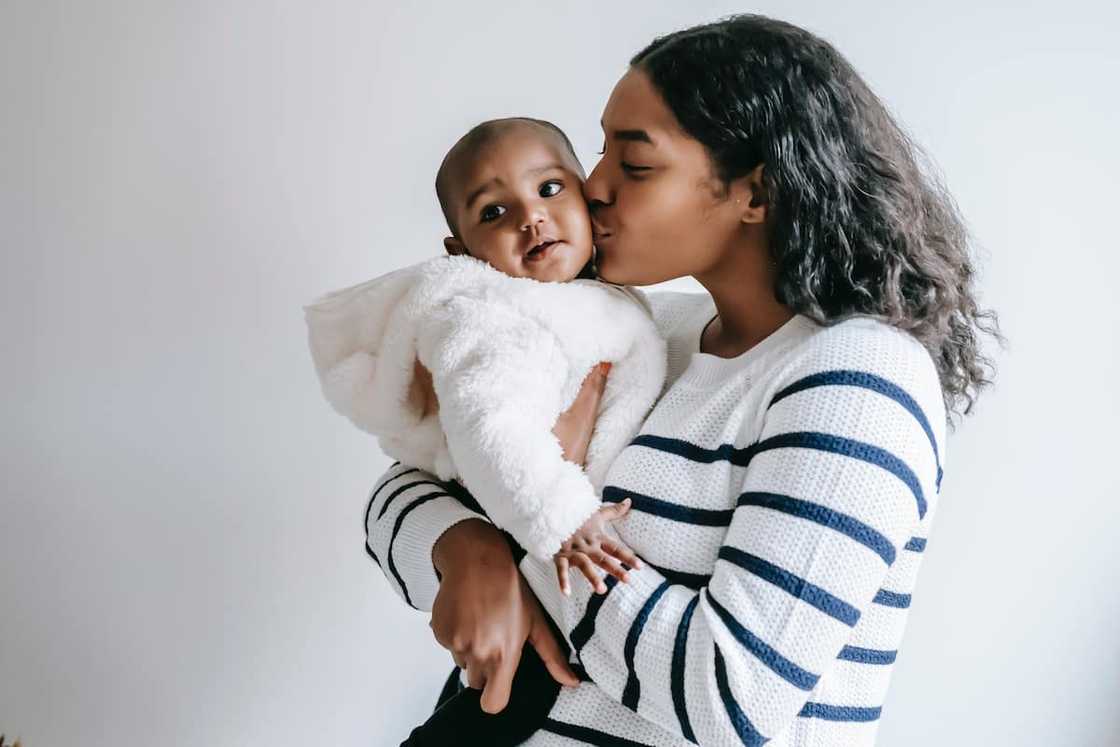
A mother kisses her baby. Photo: pexels.com, @William FortunatoSource: UGC
The ceremony marks the end of the mother’s ten-day period of solitude.
Those who do not practice traditional Xhosa birth rituals can still be invited.
The family treats the goat’s skin as a sacred item.

Read also
Who is Konka Soweto owner?
Everything to know about the restaurant and club
The child is named during theimbelekoceremony.
The Xhosa clan’s Praise-Singer summons the ancestors vocally with praises.
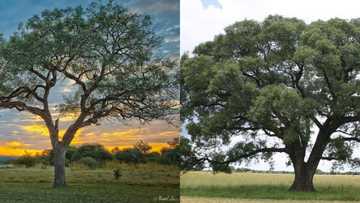
Read also
Alltraditional Xhosa nameshave beautiful meanings.
Xhosa circumcision rituals
The isiXhosa culture circumcises men and women.
Theabakweta(male initiates-in-training) live inbhoma(secluded huts) away from the village.
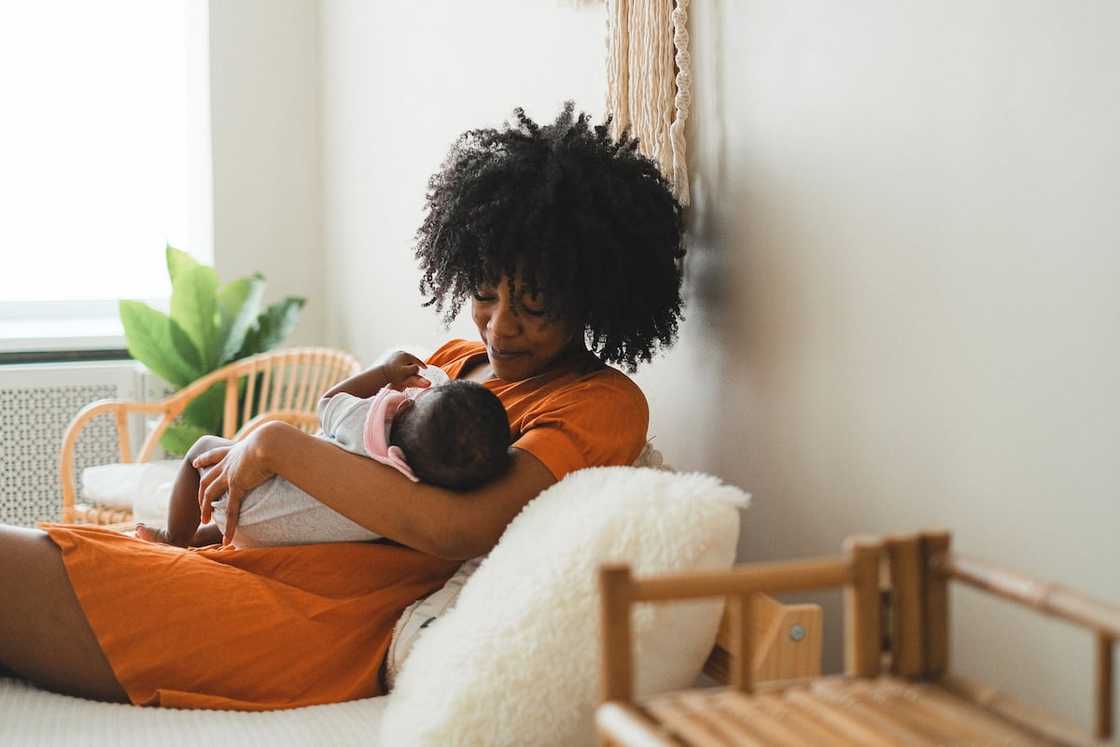
A mother cuddles her baby. Photo: pexels.com, @Anna ShvetsSource: UGC
Some foods and water may be restricted.
The second phase lasts two to three weeks, and anikhankatha(traditional attendant) looks after them.
The seclusion period ends with a goat sacrifice and the boys washing themselves.

Read also
Each initiate receives anikrwala(a new blanket), representing he is a new man oramakrwala.
What’s more, the initiates dress formally for some time after the rite.
Xhosa death and burial rituals
The Xhosa have well-definedburial rituals and practices.

Young Xhosa boys practice traditional stick fighting during a manhood ritual by the N2 highway on July 9, 2001, in Mdantsane, Eastern Cape Province, South Africa. Photo: Per-Anders PetterssonSource: Getty Images
The nuclear family announces the death of their loved one to the extended family.
The process is calledumbiko.
After that, relatives gathers to prepare for the burial.

Read also
One of the family elders guards the body throughout the days the burial preparations are going on.
These days, people take the bodies to the mortuary.
The widow is not expected to talk too much.

Read also
Meanwhile, the community gravediggers dig and prepare grave.
When the family brings the corpse home from the mortuary, they practiceukuvulwa kwebhokisi.
This means a designated person speaks to the deceased before they leave the morgue and when they arrive home.
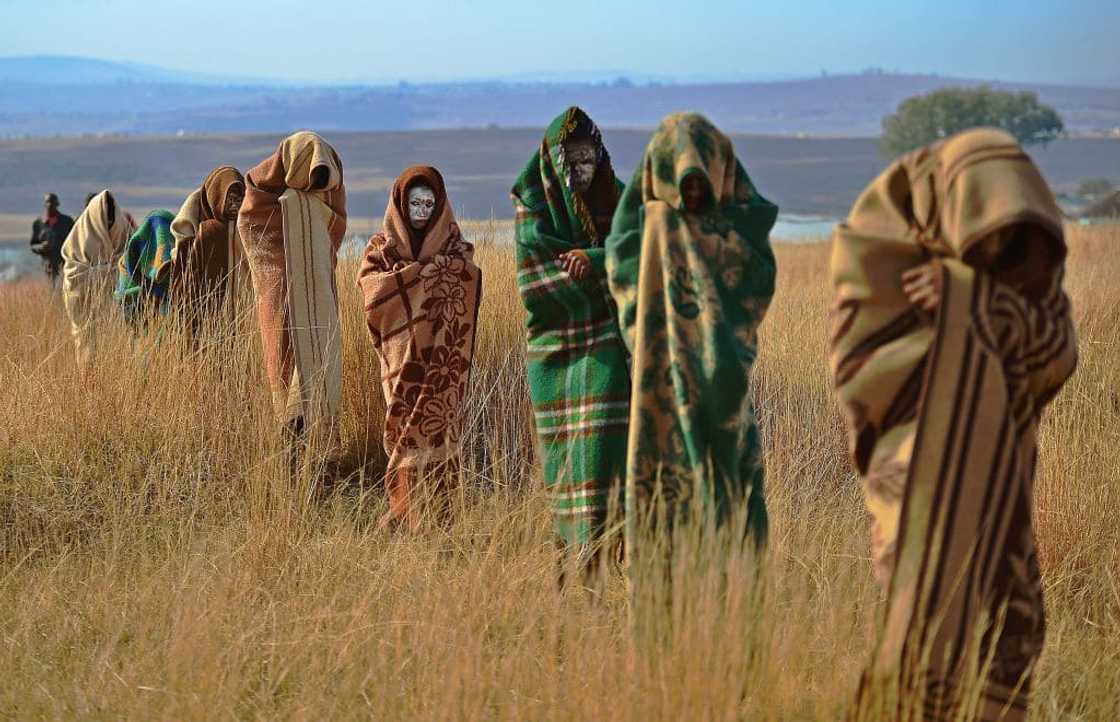
Boys from the Xhosa tribe who have undergone a circumcision ceremony are pictured near Qunu on June 28, 2013. Photo: Carl DE SOUZASource: Getty Images
Neighbors, relatives, and anyone can view the body in the coffin when it gets home.
Xhosa people call thisukubona umfi.
Xhosa funerals (umngcwabo) do not come with an invitation.
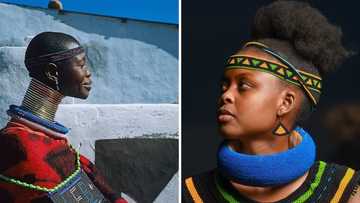
Read also
So, anyone can attend.
The family provided a bull andumngqusho(corn and beans) to feed the mourners on the burial day.
They believe the spirit must live with its family to guide and protect them.
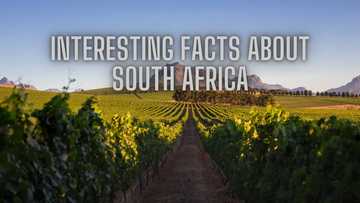
Read also
Where are the Xhosa originally from?
Xhosa ancestors, the Nguni, are believed to have occupied central and northern Africa.
Theymigrated and settledin the southern part of the continent before the arrival of the Dutch settlers.

Women wearing Xhosa wedding attire. Photo: @xhosabrides1 (modified by author)Source: UGC
Muvhango Teasers for July 2021: Will Mpho’s baby be found?
What language do the Xhosa speak?
The Xhosa language is called isiXhosa (or Xhosa in English).

Read also
It is spoken by about 16% of South Africa’s population.
Unique click sounds distinguish this Bantu language and makes it sound slightly different from from Ndebele and Swazi languages.
For example, the X, Q, KR, and CG form the clicks.

A Xhosa Village at Wild Coast, Mbotyi, Eastern Cape, South Africa Photo: Reinhard DirscherlSource: Getty Images
The click Xhosa consonants were borrowed from Khoi or San words.
What are the Xhosa family rules?
The Xhosa family is primarily patriarchal.
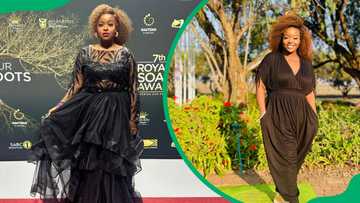
Read also
The tribe allows polygamous marriages so long as a man pays thelobola(bride price) for each wife.
What do Xhosa homesteads look like?
The homesteads round huts with grass-thatched roofs and mud walls.

A woman and man with traditional face art. Photo: @AfricanFacePainters, @worldwidenate (modified by author)Source: UGC
The roof comprises circular wooded poles and saplings, bent and bound to form a conical shape.
Who is Vele Manenje?
So, each wife needs a separate house.

Read also
Additionally, sons who have been circumcised or married also need their own huts.
The chiefs or wealthy men with large cattle herds sometimes allowed families not blood-related to reside at their homesteads.
What is the culture of Xhosa?

Read also
The Xhosa culture is extensive.
First, they believe in a supreme being in Xhosa is calledMdali,Thixo, orQamata.
Xhosas communicate to him through ancestral intermediaries who invoke the spirits of the ancestors through rituals and sacrifices.
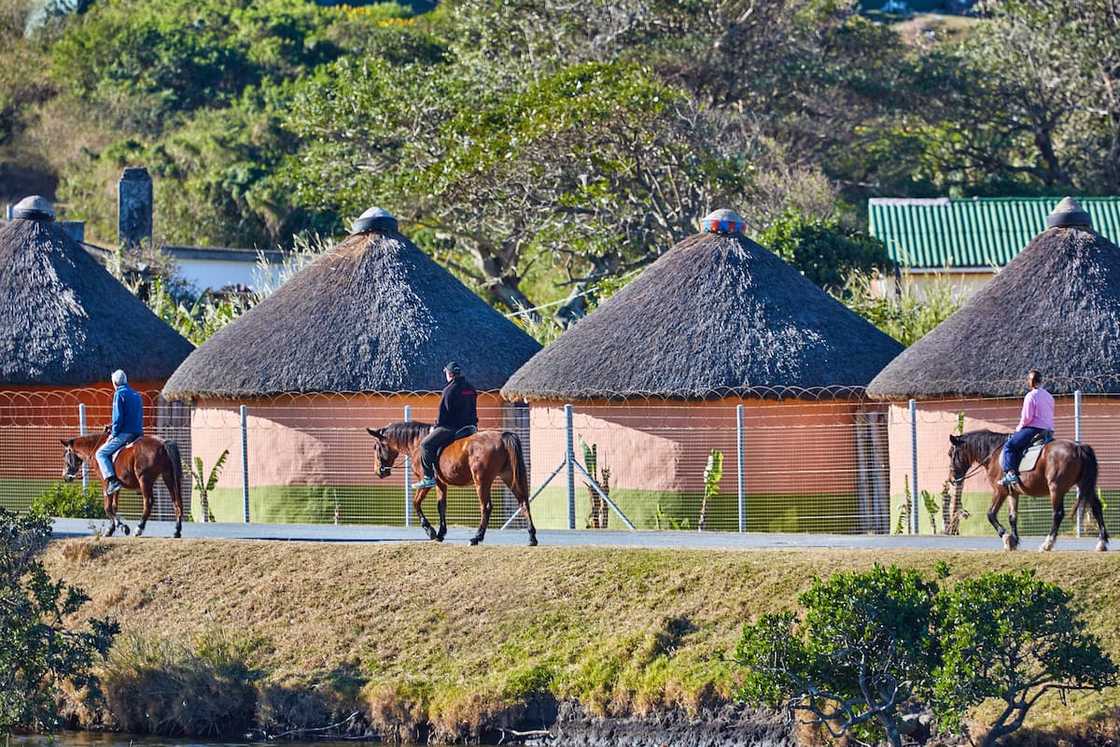
Tourists horse-riding past traditional Xhosa mud huts. Photo: Peter UngerSource: Getty Images
Additionally, the Xhosas have unique wedding, birth, circumcision, and death rituals.
They have traditional foods, folklore songs and stories, and native art.
Did the Xhosa have any artwork?
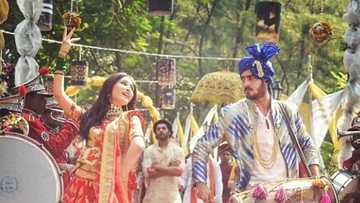
Read also
Umchokozo, face painting, plays a significant role in Xhosa culture.
Meanwhile, women decorate their faces as a ritual to prepare themselves to be custodians of their culture.
Xhosa people make beads from nutshells, wood, glass, and metal.

Women wearing Xhosa wedding attire. Photo: @xhosabrides1 (modified by author)Source: UGC
Most Xhosa stories and folktales are about the tribe’s history, religious beliefs, and heroes.
Qongqothwane, by Miriam Makeba, is a timeless Xhosa wedding song.
Meanwhile, most popular Xhosa folklore stories are about the first person on Earth and the origin of death.
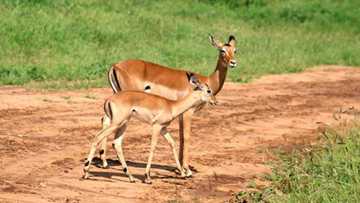
Read also
However, the chameleon got tired on its way to Earth and decided to rest.
What is the most spoken language in South Africa?
Top 11 languages
The lizard found the chameleon resting and asked it where it was going.
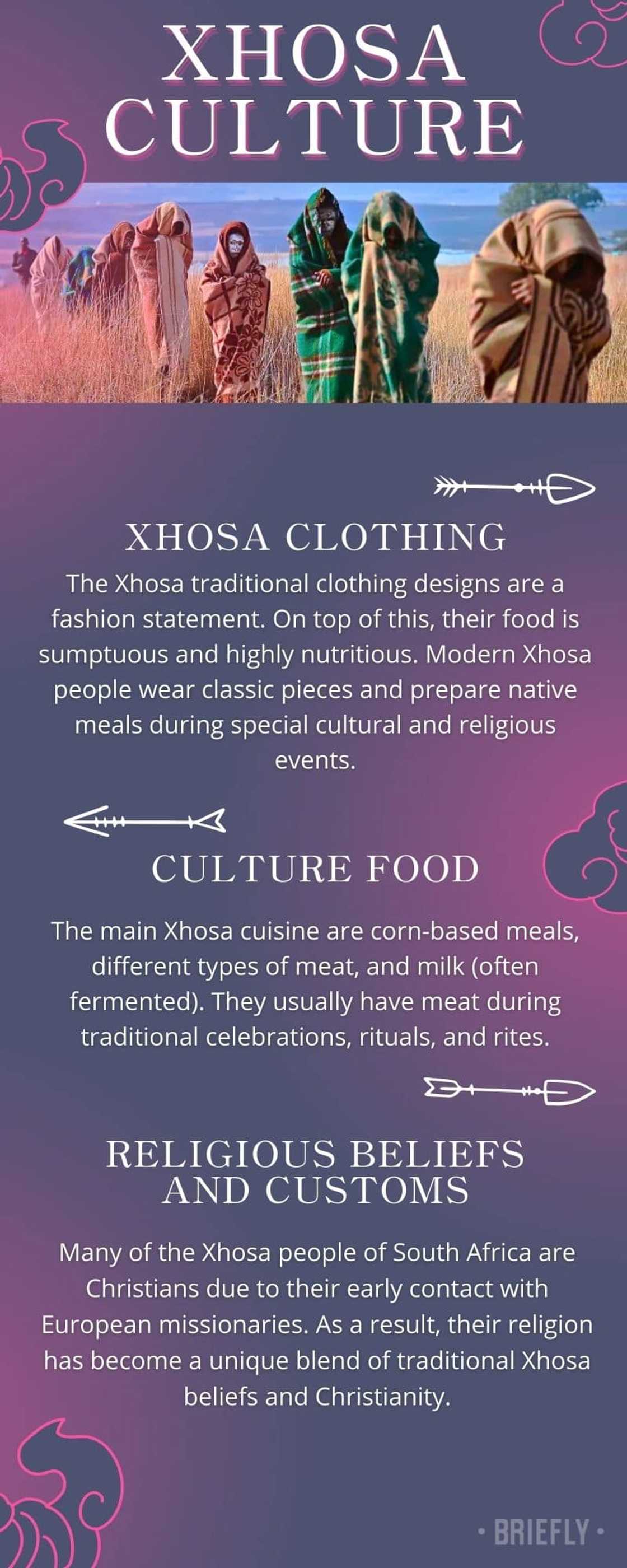
Photo: canva.com (modified by author)Source: Original
After the chameleon explained its mission, the lizard ran and told the people they would die.
An outcry erupted on the Earth, with people crying because they were going to die.
That is why people die.
What are the five habits of the Xhosa culture?
The Xhosa people emphasize traditional practices and customs inherited from their forefathers.
Their culture is extensive because it has been practiced for centuries and passed down from generation to generation.
The family introduces the baby to friends and relatives during this ceremony.
Anyone can attend the event, including people who are not Xhosa.
What are some traditional customs of the Xhosa people?
The Xhosa people have many traditions and customs.
Their beliefs, traditions, rituals, rites, and structures make them unique people.
Briefly.co.za published an article about the topSotho namesfor boys and girls.
The Sotho people are in Botswana, Lesotho, and South Africa.
Like other African communities, they have a unique way of naming their newborns.
Additionally, all Sotho names have deep cultural meanings.
She has a Bachelor of Commerce & IT from the University of Nairobi and joined Briefly.co.za in November 2019.
The writer completed a Google News Initiate Course.
you could email her at perisrodah254@gmail.com.
She tackles diverse topics, including finance, entertainment, sports, and lifestyle.
Previously, she worked at The Campanile by Kenyatta University.
She has more than five years in writing.
In 2023, Jackline finished the AFP course on Digital Investigation Techniques and Google News Initiative course in 2024.
Email: simwajackie2022@gmail.com.